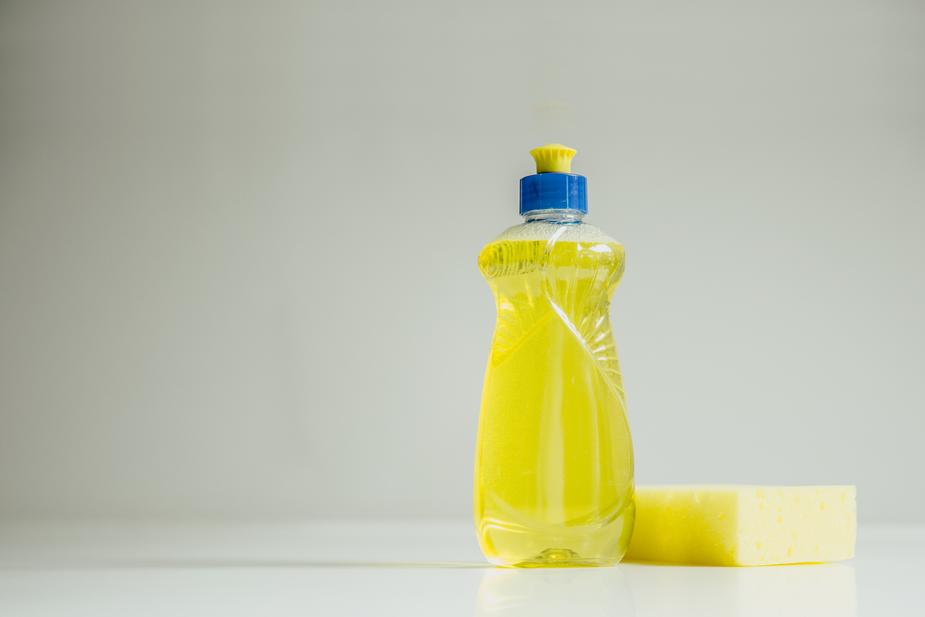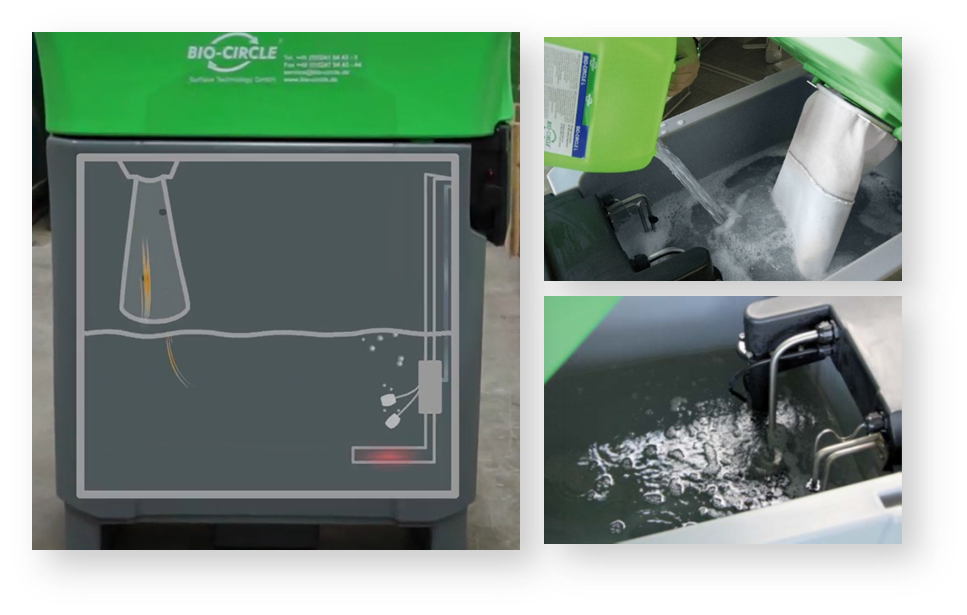How does industrial cleaning reduce COD (Chemical Oxygen Demand): Four COD reduction schemes, do you know that you are troubled by this?
The problem of COD in wastewater is often an environmental audit item, and generally there is nothing we can do about it~
We provide four angles to analyze COD sources and comprehensively evaluate the best solution~
In recent years, the emphasis on the environment has increased, and the environmental protection requirements for industrial cleaning agents have become higher. In order to enhance the cleaning effect, most water-based industrial cleaning agents at this stage contain There are more water-soluble organic substances, which makes it difficult to reduce the COD value in the cleaning waste liquid in sewage treatment. Based on many years of experience in cooperating with customers, Gonglong Chemical has proposed solutions and thinking directions based on common processes in the factory, hoping to find feasible methods for the problems currently encountered.

▲When cleaning agents wash away dirt and grease, they also produce COD wastewater
General industrial or metal processing processes often require processing oil and anti-rust oil to clean the surface. When the cleaning power decreases after long-term use, it will contain grease and surfactants. Wastewater containing COD. We analyze and explain step by step from the source of COD generation to the final wastewater treatment, which can be roughly divided into four feasible solutions, namely, source reduction 1-rust prevention, source reduction 2-cleaning, and floating Oil treatment, pipe end treatment. Further explanation below:
1. Source reduction: Use water-based rust inhibitor
Anti-rust oil is one of the anti-rust methods commonly used in processing plants. Effective anti-rust can be achieved with ordinary mineral oil, solvents or water-based anti-rust agents. capability, but it is often overlooked that this will cause a burden on the cleaning tank liquid treatment during back-end cleaning. If you only want to prevent rust for a short time between processes, or if the rust prevention time is short, you can actually consider using a water-based rust inhibitor. Rust protection of water-based systems provides extended service life, for example in alkaline industrial cleaning systems or when used as a passivating agent; it provides temporary rust protection of steel, cast iron and cast materials during short-term temporary storage.
| Product Type | How to use | Rust prevention time | Commercially available products |
| Mineral oil (pure oil) | Spray to use | 6-9 months | For example: Custos 10-12 |
| Solvent-based rust inhibitor | Spray, soak | 2-4 months | For example: Hakudren 7 KL 58 |
| Water-based rust inhibitor | Add 1% to the washing tank | 2-6 weeks | For example: GX Proof 6151 |

▲Rust prevention is a common process in metal processing
2. Source reduction: Use low COD cleaning agent
Have you tested the COD concentration of the cleaning agents currently used? When talking about cleaning agents with operators on site, the most popular question recently is asking about cleaning agents. What is the COD? I am worried that the use of high-concentration COD cleaning agents will cause a burden on back-end wastewater treatment. In fact, this worry is not unreasonable. Since various surfactants are added to the cleaning agent, different formulas contribute different concentrations of COD. Based on years of experience in analyzing COD in industrial wastewater, the treatment of this kind of COD is quite difficult. , even adding a large amount of activated carbon or using advanced oxidation methods may not be able to effectively reduce it to below the standard.
| Powder degreasing agent | Strong alkali environmentally friendly cleaning agent | Weak alkali environmentally friendly cleaning agent | Neutral environmentally friendly cleaning agent | Bio-based environmentally friendly cleaning agent | |
| Features | Strong degreasing power and many residues | Strong degreasing power, no residue | Medium cleaning power, long lasting power | Medium cleaning power, suitable for non-ferrous materials | Medium cleaning power, recyclable, no waste water |
| Applicable materials | Iron, stainless steel | Iron, stainless steel, aluminum, non-ferrous metals | Iron, stainless steel, galvanized, aluminum, non-ferrous metals |
Plastic, aluminum, non-ferrous metals |
Iron, stainless steel, aluminum, non-ferrous metals |
| COD (ppm) | 2-3 million | 250,000-350,000 | 300,000-410,000 | 100,000-200,000 |
160,000-200,000 |
| Add proportion (%) | 30-40 | 5-10 | 5-10 | 5-10 | 100 |
| Commercially available products | For example: WZ 745 | For example: HP 50-706-2 | For example: CB 100 | For example: HP 50-418-2 | For example: Bio-Circle Liquid |
Since the COD contributed by cleaning agents is so difficult to deal with, of course, when choosing a cleaning agent, you need to pay more attention to its COD concentration. Take the following table as an example. We can select a suitable cleaning agent based on the material of the workpiece to be cleaned and the ease of cleaning grease and dirt. If you only need to clean moderate oil stains, you do not need to use a powder degreasing agent with extremely strong degreasing power. Instead, choose a water-based strong/weak alkali environmentally friendly cleaning agent, which also eliminates unnecessary high concentrations of COD. Waste bath liquid disposal. For workpieces that are small in quantity and not large in size, biological environmentally friendly cleaning agents can also be considered. By combining it with a circulating cleaning machine, the cleaning agent can be reused, and the washed grease can also be biodegraded to achieve an advanced cleaning experience with zero waste water.

▲Bio-Circle advanced cleaning system with biological cleaning agents to solve wastewater problems
3. Oil slick treatment: Pretreatment of oil slick on the tank surface
Among many cleaning agents, the reaction of cleaning agents to grease can be roughly divided into two functions: floating and emulsification. The emulsification effect of the cleaning agent cuts the grease on the surface of the workpiece into very fine microbubbles, and even dissolves it in water through its amphoteric characteristics. Due to its dissolving properties, this feature has a high ability to handle grease, but it also ages relatively quickly compared to the cleaning bath liquid. In contrast, floating cleaning agents mainly penetrate into the joints between the grease and the workpiece and do not directly react with the grease, allowing the grease to float on the surface of the cleaning bath without quickly contaminating the cleaning solution. From the perspective of COD treatment, the floating method helps to separate oil and water. The oil scraping equipment in the tank design can be used to regularly remove the floating oil to the collection bucket, and the waste oil can be removed by a dedicated waste collector. Oil collectors handle it. The use time of the cleaning agent can also be extended and the high-concentration COD waste liquid that will cause trouble when the bath liquid is discharged in the future can be reduced.
4. End-of-pipe treatment: COD wastewater treatment
In the end, if the generation of high concentration COD cannot be avoided, treatment strategies can only be found when the cleaning wastewater flows into the treatment system. With the cleaning wastewater we have been exposed to so far, it is generally impossible to reduce COD in the water with a simple treatment process. Generally speaking, we can divide this wastewater into two categories. The first category is the water washing tank after the cleaning tank. The COD concentration in the water in this tank is relatively low and the water volume is large. This can usually be achieved by setting up an activated carbon filling tower at the end of the wastewater treatment system. can reach the standard. Relatively difficult to deal with is waste cleaning tank fluid. This wastewater usually has a small volume but a relatively high COD concentration, and cannot be effectively treated even if a large amount of activated carbon is added. For wastewater with small volume but high COD concentration, advanced oxidation treatment methods must be carefully selected. Simple Fenton or ozone oxidation will not be able to effectively treat it. In terms of oxidation treatment technology, electrolytic reduction Fenton, UV Fenton In terms of treatment efficiency, oxidation technologies such as Dayton can help treat such high-concentration COD wastewater to below regulatory standards, but the treatment cost is relatively high.
Taken together, the COD problem caused by cleaning agents is not difficult to deal with. If we can adopt low-COD source reduction solutions such as rust prevention and cleaning at the process end , that is, this thorny problem can be dealt with in a relatively efficient and low-cost manner. If an effective solution cannot be taken at the source, it will cost a lot to invest in equipment in the wastewater treatment system to solve the problem, and the difficulty of the problem will be relatively high at this time.
CONTACT US
Kelly Chemical Corporation
Electronics
TEL:(02)2762-1985 ext 11200
Online Message
Leave your contact information,
and we will get in touch with you soon.
Email Consultation
After receiving your email,
we will process it as soon as possible.send Email